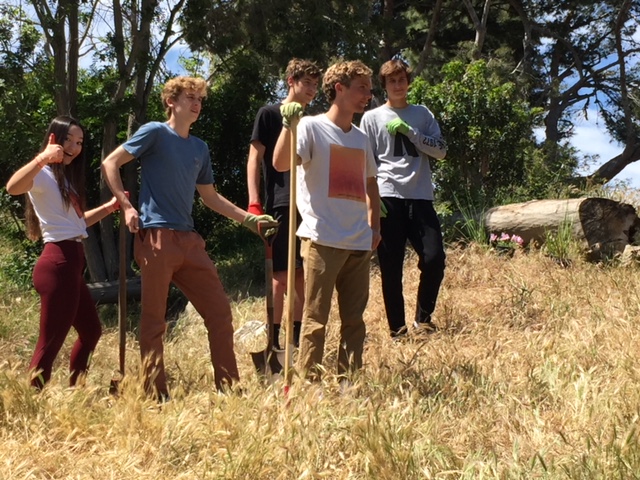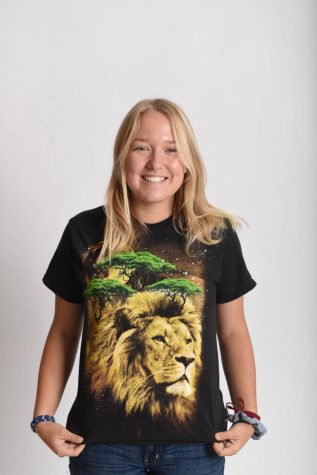Forging a path ahead
AP Environmental Science and students from Parras Middle School revitalize Wilderness Park
AP Environmental Science students took part in an extra credit opportunity at Hopkins Wilderness Park, Redondo Beach on Saturday, April 22. Working alongside a group of students from Parras Middle School, APES teacher Gillian Moberg led the RUHS students in the first of many activities meant to “revitalize” the park.
The movement to assist the park comes partially from Redondo Beach’s ranking as “park poor,” based on data gathered by the California Department of Public Health. The city earns this label based on its ratio of 1.3 acres per every 1,000 residents; this means that the 11-acre Wilderness Park represents public park space for approximately 8,462 Redondo Beach residents.
“To be honest, sometimes we learn so much about negative impacts that you need a positive impact just to feel like these problems do have solutions, even just on a local level,” Moberg said.
The volunteers spent three hours digging up the soil, removing non-native grasses and trees “deliberately placed for shade and fodder,” according to Moberg. Overall, the students planted 55 shrubs and baby trees along the park’s man-made stream.
Wilderness Park’s website states that “the garden is comprised of drought-tolerant plants that are native to our region in order to educate the community about native plants and California-friendly demonstration gardens.”
One of the later goals for the students is to redesign the lower pond of the park, which has been completely dried up. As part of this initiative, juniors Justin Pioletti and Claire Haddad, along with the school’s ECO Club, were chosen to “adopt” the pond in order to recommend future action.
“I grew up going to Wilderness Park; every July through elementary and middle school, my mom would drop us off for a four-week camp. I always had so much fun there, so seeing the pond in disrepair was really sad to me,” Haddad said.
Haddad’s team will be working with the South Bay Parkland Conservancy and Eagle Scout Tucker Merritt, junior, and have five-year and ten-year plans that they will propose to City Council.
“Wilderness Park is just a hot mess right now, so we’re just going to do little things to revamp it. Our team will be working until April 2019, and it’s mainly just us being the communications in the project,” Haddad said.
In the meantime, all of the APES classes are scheduled to return to the park through the end of the 2017-18 school year to conduct more research. The students will begin with a “bioblitz”, meaning they will record all of the species in Wilderness Park over a set period of time.
While the students will be focused on assisting the park in the years to come, Moberg also insists that making a “positive impact” in the community is easier than people may think.
“Sustainability is something that you can actually incorporate in your life with very little inconvenience. Certainly being part of a sustainable movement has more benefits than just being environmentally-friendly,” Moberg said. “It impacts your own community, your own backyard.”




